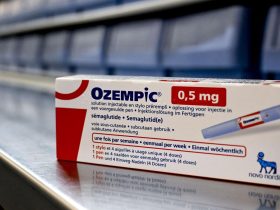This commentary was issued recently by money managers, research firms, and market newsletter writers and has been edited by Barron’s.
Global Focus
NDR Ned Davis Research
Sept. 14: One lasting consequence of the Covid pandemic appears to be the way we work. Among major economies, flexible weeks and days worked from home have become a norm. Employees globally work almost a day at home per week. The number is greater in Canada, the United Kingdom, and the U.S., and lowest in Asia and France.
While many debate the merits of flexible work, there are some signs it could be contributing to a long-term demographic change that could have positive implications for years to come.
Among most major economies, workforce participation among females ages 25-54 (ages where children are most likely to be living in households) has surged faster than men of that same age range. This could suggest that flexible work is making it easier for this cohort of women to juggle work and family. Moreover, some early research suggests that it could be contributing to higher birthrates.
A rising and more active working-age population has positive implications for long-term growth and equity-market returns.
Alejandra Grindal, Patrick Ayers
Stocks Stuck in Neutral
Macro Strategy
Seaport Research Partners
Sept. 14: We don’t like the current equity setup with the
S&P 500
index near year-to-date highs.
Cyclical/defense momentum is well advanced versus the ISM book-to-bill (orders to inventories) ratio. China stimulus and near-zero expectations for it working may help the upside surprise case, to be fair.
Market breadth is deteriorating, and defensive sectors and factors are percolating, while the dollar and crude oil are rallying.
To us, these dynamics appear inconsistent against the backdrop of heightened expectations for a soft landing and/or economic resilience persisting. Moreover, the strengthening of the dollar, crude oil, and pipeline PPI [producer price index] should support a yield narrative of “higher for longer,” which arguably undermines a soft landing.
Per our prior work, we expected PPI to reflate on weaker year-over-year dollar and crude dynamics, which ran counter to negative concerns of deflation at the time. Pricing out deflation was constructive for equities, which may now be vulnerable to resurgent inflation.
Given these risks, we remain neutral equities, as there is limited upside to our 4500 target, which relies on an eventual or anticipated loosening of monetary policy.
Victor Cossel
Bank Woes Aren’t Over
Ahead of the Herd
Sept. 13: It was exactly six months ago when the U.S. regional-banking crisis started to dominate news headlines, triggering concerns over the global financial system. Fast forward to today and the panic has mostly subsided, thanks in large part to the financial might of the Federal Reserve, which acts as a lender of last resort to the banks.
Still, the sequence of events left us with a lot of unanswered questions. After all, emergency funds from the Fed can only paper over the cracks of the U.S. banking system; the main forces behind the bank failures earlier this year—four, to be precise—are still present, namely high interest rates….
At this point, it’s still unclear whether the U.S. banks are really out of the woods.
There’s still lots to play out in this story; the Fed, which has its part to blame for its lenient policies and oversight, could be calling an end to the current monetary tightening cycle as soon as next year, which would be welcomed by individual banks. But just how much of a lifeline the Fed has given to the banks remains to be seen; some may not last until then. After all, many U.S. banks continue to sit on deteriorating long-term assets as a result of the Fed’s rate hikes.
If we had to speculate, then it’s very likely that we haven’t heard the last of this story.
There’s one important figure we have to point to: $558 billion. That is the total amount of unrealized losses on securities held by U.S. banks in the second quarter, according to banking data compiled by the Federal Deposit Insurance Corp.
That represents an 8.2% increase over the $515.5 billion from the first quarter, meaning that these banks have racked up more losses since the crisis began.
Richard Mills
Small-Biz Optimism Slips
Daily Insights
BCA Research
Sept. 13: U.S. small-business optimism deteriorated for the first time in four months in August. The NFIB index declined by 0.6 point, to 91.3, falling slightly below expectations of 91.5.
Current conditions deteriorated slightly: The share of owners reporting higher sales in the past three months inched down by one point to a three-year low of net negative 14%. Moreover, small-business owners grew more pessimistic about the outlook. The net share of respondents anticipating higher sales in the future fell by two points, to net -14%—albeit above the 2022 low of -29%.
Similarly, the net share of respondents expecting business conditions to improve over the next six months deteriorated by seven points—to 37%. This follows a 13-month period of steadily easing pessimism about the outlook for general business conditions. The U.S. economy isn’t yet out of the woods.
Roukaya Ibrahim
Stay Overweight Energy
The Pulse of the Market
RBC Capital Markets
Sept. 11: The thing that jumps out the most in our sector work is the extent to which the energy sector has outperformed within the S&P 500 and
Russell 2000
since the beginning of August.
We’ve been overweight this sector within the S&P 500, and find that despite the late summer move, the sector still looks attractive on our valuation models. Earnings revisions are also in the early stages of a recovery, and have already made a move back into positive territory in large-caps.
We are keeping our Overweight rating on, while acknowledging our energy strategist’s view that oil prices are at risk of consolidation around current levels.
Lori Calvasina
To be considered for this section, material, with the author’s name and address, should be sent to [email protected].
Read the full article here











Leave a Reply